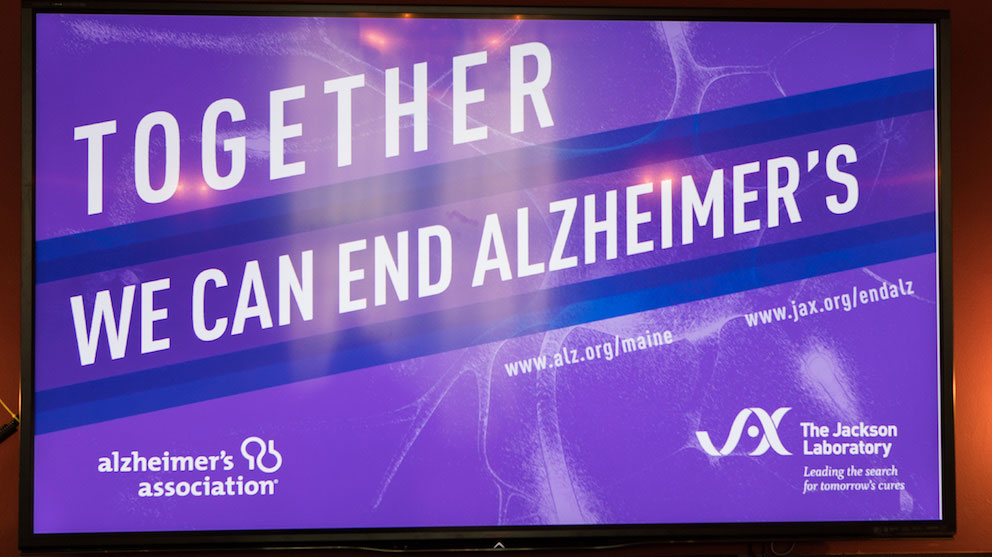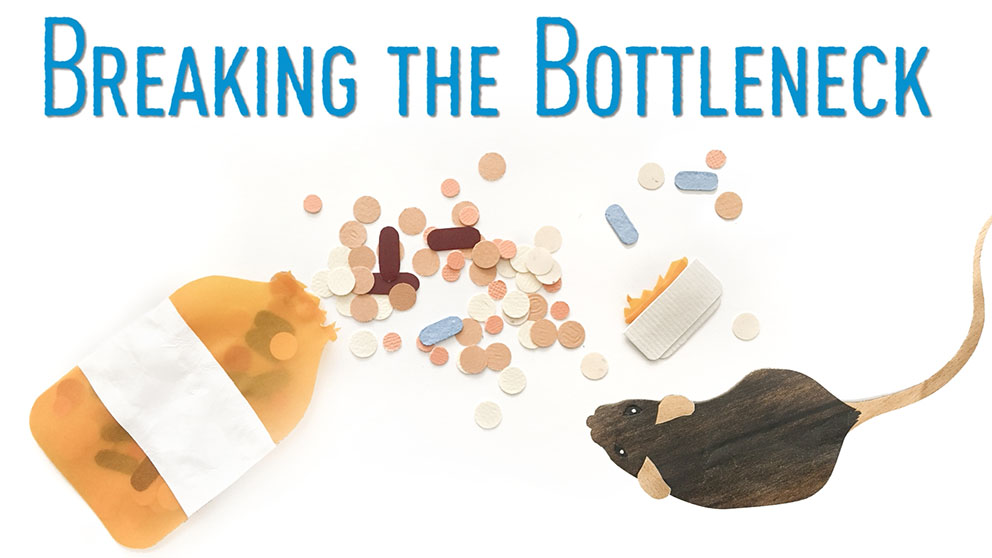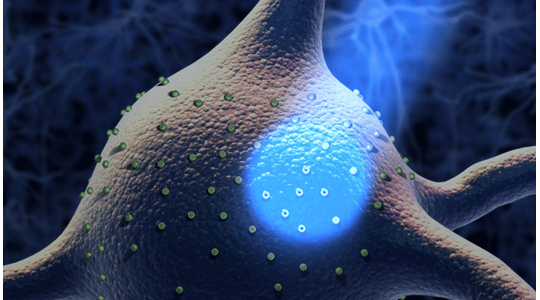Michael Sasner, Ph.D.
Senior Research Scientist
Focuses on creating and characterizing mouse models that accurately model human neurodegenerative disease and therefore can be used in the development of new therapies.
Location
Centers
In the MODEL-AD program, my focus is on creating and characterizing improved models of late-onset Alzheimer’s disease to be used in the development of novel therapeutics. This includes generation of new mouse models expressing genetic risk factors previously identified in human disease and phenotyping of clinically relevant traits to be used in preclinical testing.
We also using a genetic knock-in approach to generate more relevant models of familial (early-onset) AD, and to study genetic risk associated with key aging and disease-associated variants at the APOE and klotho loci. As partners in a consortium focused on the role of neuroinflammation in neurodegenerative diseases, we create unique animal models useful for the study of disease etiology (e.g., fluorescent reporters for specific microglia or astrocyte cell states).
We continually strive to develop and implement improved experimental methods by partnering with companies to validate and adopt new technologies. In all projects, a main goal is to make novel resources, included animal models, information, and methods, widely available for both academic and biomedical research. Towards this goal, I am co-Director of an annual hands-on workshop Principles and Techniques for Improving Preclinical Translation in Alzheimer’s Disease.
Selected Publications
- 65 Sasner M, Preuss C, Pandey RS, Uyar A, Garceau D, Kotredes KP, Williams H, Oblak AL, Lin PB, Perkins B, Soni D, Ingraham C, Lee-Gosselin A, Lamb BT, Howell GR, Carter GW. In vivo validation of late-onset Alzheimer's disease genetic risk factors. Alzheimers Dement. 2024 Jul; 20(7):4970-4984
- 82 Onos KD, Lin PB, Pandey RS, Persohn SA, Burton CP, Miner EW, Eldridge K, Kanyinda JN, Foley KE, Carter GW, Howell GR, Territo PR. Assessment of neurovascular uncoupling: APOE status is a key driver of early metabolic and vascular dysfunction. Alzheimers Dement. 2024 Jul; 20(7):4951-4969
- 49 Pandey RS, Arnold M, Batra R, Krumsiek J, Kotredes KP, Garceau D, Williams H, Sasner M, Howell GR, Kaddurah-Daouk R, Carter GW. Metabolomics profiling reveals distinct, sex-specific signatures in serum and brain metabolomes in mouse models of Alzheimer's disease. Alzheimers Dement. 2024 Jun; 20(6):3987-4001
- 45 Kotredes KP, Pandey RS, Persohn S, Elderidge K, Burton CP, Miner EW, Haynes KA, Santos DFS, Williams SP, Heaton N, Ingraham CM, Lloyd C, Garceau D, O'Rourke R, Herrick S, Rangel-Barajas C, Maharjan S, Wang N, Sasner M, Lamb BT, Territo PR, Sukoff Rizzo SJ, Carter GW, Howell GR, Oblak AL. Characterizing molecular and synaptic signatures in mouse models of late-onset Alzheimer's disease independent of amyloid and tau pathology. Alzheimers Dement. 2024 Jun; 20(6):4126-4146
- 29 Benzow K, Karanjeet K, Oblak AL, Carter GW, Sasner M, Koob MD. Gene replacement-Alzheimer's disease (GR-AD): Modeling the genetics of human dementias in mice. Alzheimers Dement. 2024 Apr; 20(4):3080-3087
- 14 Sasner M, Territo PR, Sukoff Rizzo SJ. Meeting report of the annual workshop on Principles and Techniques for Improving Preclinical to Clinical Translation in Alzheimer's Disease research. Alzheimers Dement. 2023 Nov; 19(11):5284-5288
- 0 Quinney SK, Murugesh K, Oblak A, Onos KD, Sasner M, Greenwood AK, Woo KH, Rizzo SJS, Territo PR. STOP-AD portal: Selecting the optimal pharmaceutical for preclinical drug testing in Alzheimer's disease. Alzheimers Dement. 2023 Nov; 19(11):5289-5295
- 62 Pandey RS, Kotredes KP, Sasner M, Howell GR, Carter GW. Differential splicing of neuronal genes in a Trem2*R47H mouse model mimics alterations associated with Alzheimer's disease. BMC Genomics. 2023 Apr 4; 24(1):172
- 86 De Schepper S, Ge JZ, Crowley G, Ferreira LSS, Garceau D, Toomey CE, Sokolova D, Rueda-Carrasco J, Shin SH, Kim JS, Childs T, Lashley T, Burden JJ, Sasner M, Sala Frigerio C, Jung S, Hong S. Perivascular cells induce microglial phagocytic states and synaptic engulfment via SPP1 in mouse models of Alzheimer's disease. Nat Neurosci. 2023 Mar; 26(3):406-415
- 84 Reagan AM, Christensen KE, Graham LC, Bedwell AA, Eldridge K, Speedy R, Figueiredo LL, Persohn SC, Bottiglieri T, Nho K, Sasner M, Territo PR, Rozen R, Howell GR. The 677C > T variant in methylenetetrahydrofolate reductase causes morphological and functional cerebrovascular deficits in mice. J Cereb Blood Flow Metab. 2022 Dec; 42(12):2333-2350
- 37 Onos KD, Quinney SK, Jones DR, Masters AR, Pandey R, Keezer KJ, Biesdorf C, Metzger IF, Meyers JA, Peters J, Persohn SC, McCarthy BP, Bedwell AA, Figueiredo LL, Cope ZA, Sasner M, Howell GR, Williams HM, Oblak AL, Lamb BT, Carter GW, Rizzo SJS, Territo PR. Pharmacokinetic, pharmacodynamic, and transcriptomic analysis of chronic levetiracetam treatment in 5XFAD mice: A MODEL-AD preclinical testing core study. Alzheimers Dement (N Y). 2022; 8(1):e12329
- 31 Oblak AL, Cope ZA, Quinney SK, Pandey RS, Biesdorf C, Masters AR, Onos KD, Haynes L, Keezer KJ, Meyer JA, Peters JS, Persohn SA, Bedwell AA, Eldridge K, Speedy R, Little G, Williams SP, Noarbe B, Obenaus A, Sasner M, Howell GR, Carter GW, Williams H, Lamb BT, Territo PR, Sukoff Rizzo SJ. Prophylactic evaluation of verubecestat on disease- and symptom-modifying effects in 5XFAD mice. Alzheimers Dement (N Y). 2022; 8(1):e12317
- 75 Foley KE, Diemler CA, Hewes AA, Garceau DT, Sasner M, Howell GR. APOE ε4 and exercise interact in a sex-specific manner to modulate dementia risk factors. Alzheimers Dement (N Y). 2022; 8(1):e12308
- 76 Oblak AL, Kotredes KP, Pandey RS, Reagan AM, Ingraham C, Perkins B, Lloyd C, Baker D, Lin PB, Soni DM, Tsai AP, Persohn SA, Bedwell AA, Eldridge K, Speedy R, Meyer JA, Peters JS, Figueiredo LL, Sasner M, Territo PR, Sukoff Rizzo SJ, Carter GW, Lamb BT, Howell GR. Plcg2(M28L) Interacts With High Fat/High Sugar Diet to Accelerate Alzheimer's Disease-Relevant Phenotypes in Mice. Front Aging Neurosci. 2022; 14:886575
- 113 Xia D, Lianoglou S, Sandmann T, Calvert M, Suh JH, Thomsen E, Dugas J, Pizzo ME, DeVos SL, Earr TK, Lin CC, Davis S, Ha C, Leung AW, Nguyen H, Chau R, Yulyaningsih E, Lopez I, Solanoy H, Masoud ST, Liang CC, Lin K, Astarita G, Khoury N, Zuchero JY, Thorne RG, Shen K, Miller S, Palop JJ, Garceau D, Sasner M, Whitesell JD, Harris JA, Hummel S, Gnörich J, Wind K, Kunze L, Zatcepin A, Brendel M, Willem M, Haass C, Barnett D, Zimmer TS, Orr AG, Scearce-Levie K, Lewcock JW, Di Paolo G, Sanchez PE. Novel App knock-in mouse model shows key features of amyloid pathology and reveals profound metabolic dysregulation of microglia. Mol Neurodegener. 2022 Jun 11; 17(1):41
- 57 Polinski NK, Martinez TN, Ramboz S, Sasner M, Herberth M, Switzer R, Ahmad SO, Pelligrino LJ, Clark SW, Marcus JN, Smith SM, Dave KD, Frasier MA. The GBA1 D409V mutation exacerbates synuclein pathology to differing extents in two alpha-synuclein models. Dis Model Mech. 2022 Jun 1; 15(6)
-
 Press ReleaseJuly 23, 2018
Press ReleaseJuly 23, 2018Eight new mouse models for Alzheimer’s disease available to researchers
Indiana University-Jackson Laboratory MODEL-AD Center addresses critical need for precision animal models for Alzheimer’s research. -
 Search MagazineJanuary 30, 2017
Search MagazineJanuary 30, 2017Breaking the bottleneck
For the first time, researchers have the tools to build new mouse models that truly represent patients with Alzheimer’s disease. -
Press ReleaseMarch 31, 2014
The Jackson Laboratory, University College, London, receive collaborative grant from The Chordoma Foundation
-
eNewsNovember 02, 2011
Optogenetic mice light up neuroscience research
Learn about the variety of optogenetic mouse models that are available from The Jackson Laboratory and how these mice are revolutionizing neuroscience research.
-
 Press ReleaseJuly 13, 2018
Press ReleaseJuly 13, 2018New research effort to understand role of APOE mutation in Alzheimer’s disease
Inheriting a specific genetic variant, APOEε4, is linked with 15-20 percent rise in risk of developing Alzheimer’s, with at least 20 other genes implicated. JAX researchers are studying how APOEε4 risk depends on other genes, in mice with a wide variety of genetic backgrounds. -
eNewsJanuary 21, 2016
Toward more predictive genetic mouse models of Alzheimer's disease
Alzheimer’s disease is a degenerative brain disease that leads to cognitive decline, dementia and ultimately death, mostly in the elderly. -
 Blog PostSeptember 26, 2013
Blog PostSeptember 26, 2013Optogenetics: Not a flash in the pan for neuroscience
Neuroscience is still a young science. Optogenetics provides an intriguing way to explore what’s going on inside our brains.